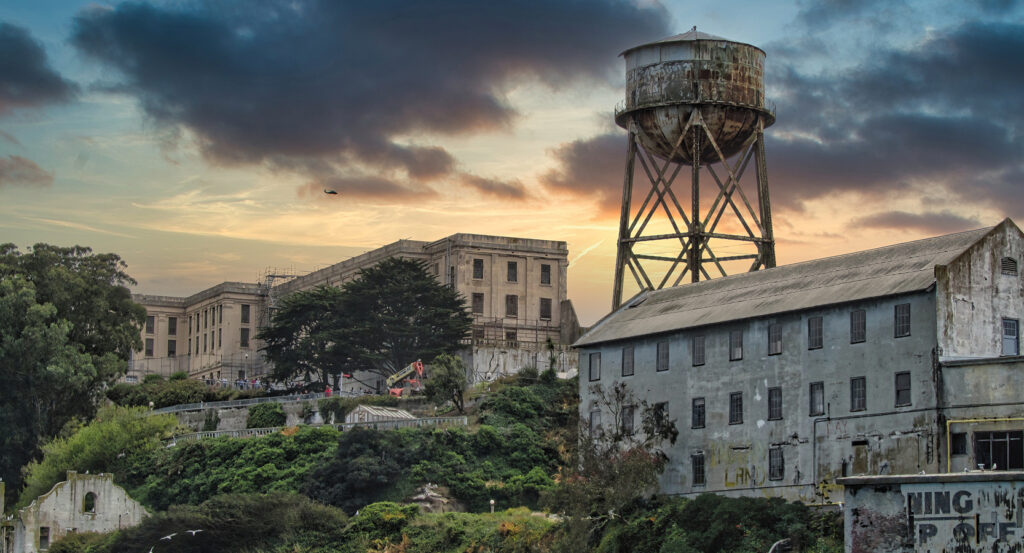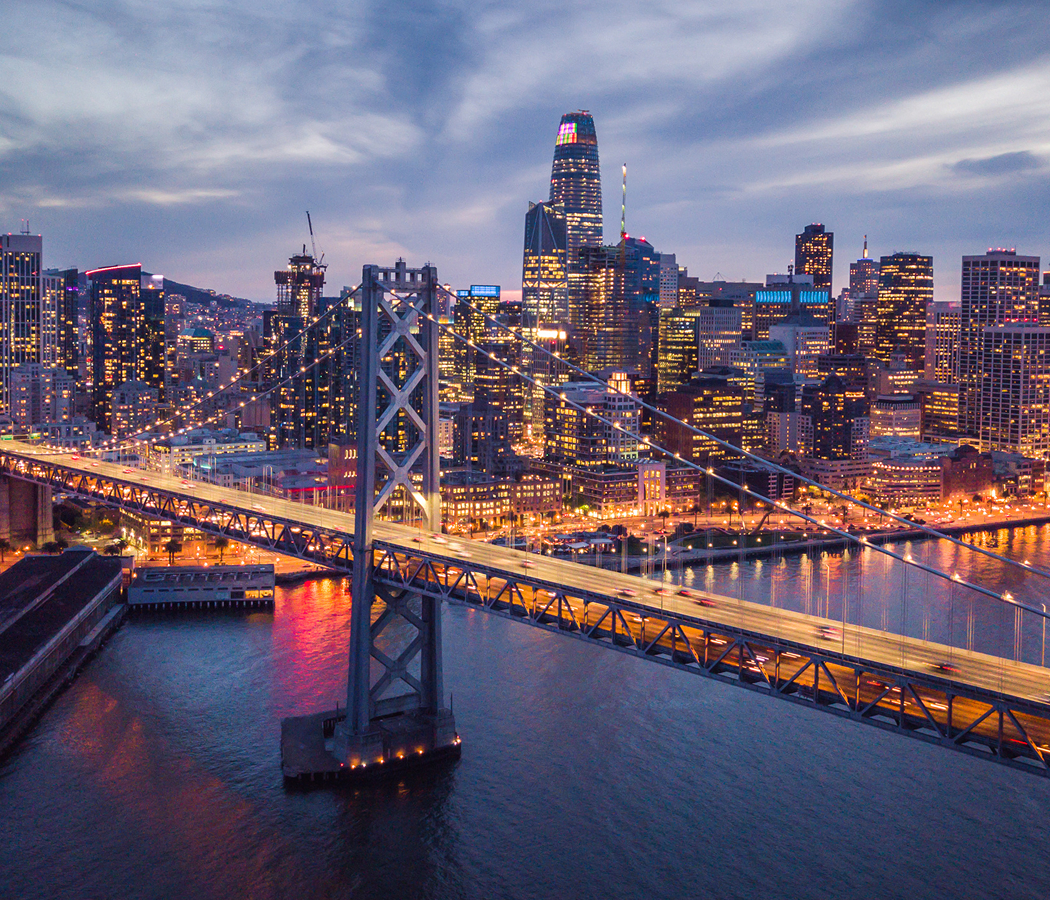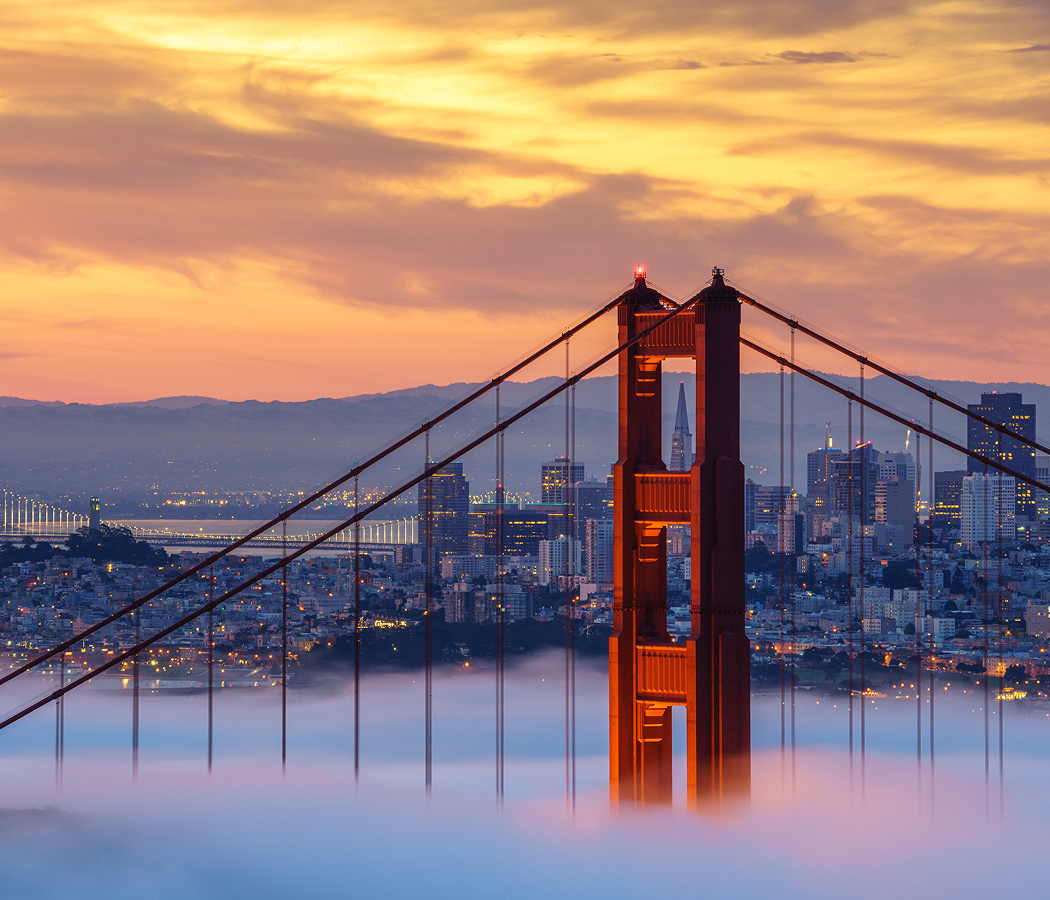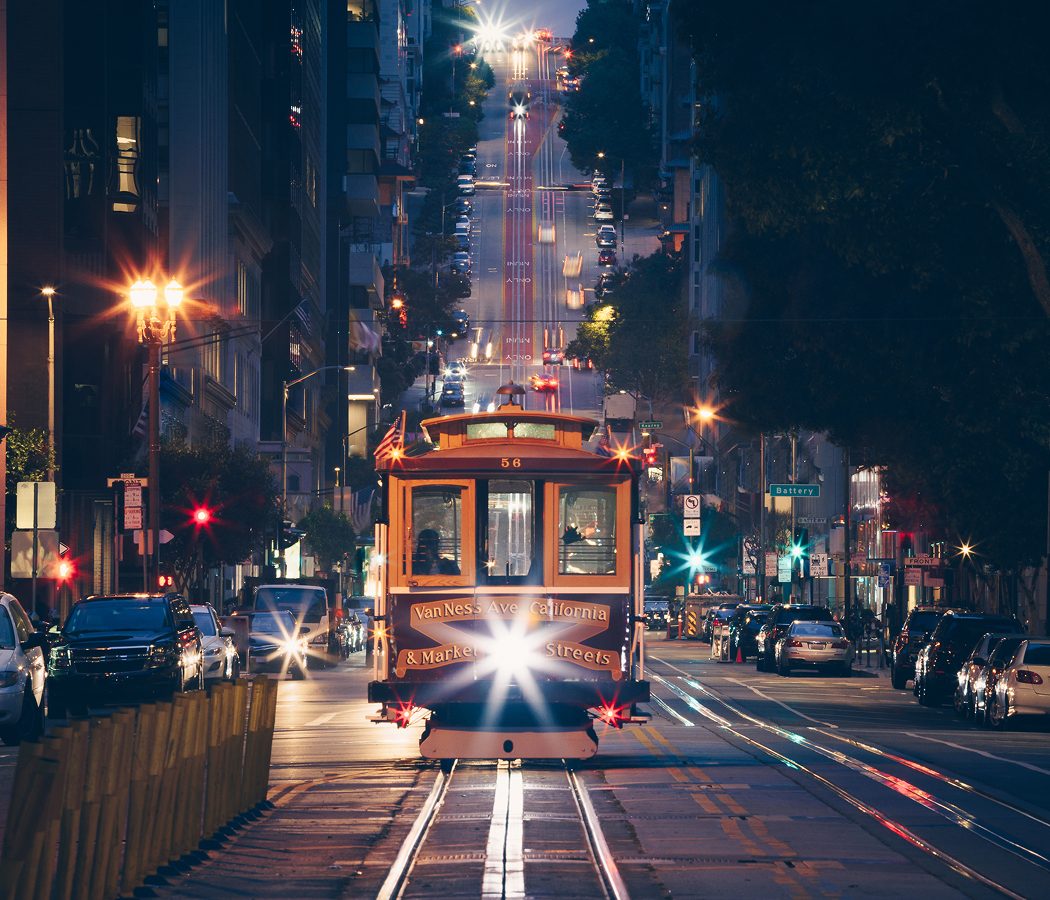
Why you should experience Alcatraz Island in San Francisco.
Rising from the fog-shrouded waters of San Francisco Bay, Alcatraz Island is more than a former prison, it’s a haunting monument to resilience, rebellion, and redemption.
From the ferry ride across the bay, the island’s silhouette commands attention, stark, weathered, and unforgettable. As you approach the rocky shore, the stories begin to echo: whispers of escape attempts, the clang of iron doors, the lives that played out within the cold stone walls of one of the most infamous penitentiaries in the world. Inside, the cellhouse feels frozen in time, narrow corridors lined with rows of tiny cells that once held America’s most notorious criminals, including Al Capone and “Machine Gun” Kelly. Yet beyond the legends of crime and punishment, Alcatraz tells a deeper story of transformation. Its grounds are now a haven for seabirds and wildflowers, its crumbling buildings softened by the passage of time. Standing on the edge of the island, with the Golden Gate Bridge gleaming through the mist, you can feel both the weight of history and the enduring pull of freedom. It’s eerie, it’s beautiful, and it leaves an imprint that lingers long after you’ve returned to shore.
What you didn’t know about Alcatraz Island.
The legend of Alcatraz often overshadows its astonishing history, a layered chronicle that extends far beyond its years as a maximum-security prison.
Originally discovered by Spanish explorer Juan Manuel de Ayala in 1775, the island was named La Isla de los Alcatraces (“Island of the Pelicans”) for the seabirds that nested there. In the mid-19th century, it became a military fortification, then a military prison, before being converted into a federal penitentiary in 1934. Designed to house the most dangerous and escape-prone inmates, Alcatraz was considered inescapable, surrounded by freezing, current-swept waters that made any attempt at freedom nearly suicidal. Yet in 1962, three inmates famously vanished after tunneling through their cell walls and setting off on a homemade raft, their fate still one of history’s greatest mysteries. But Alcatraz’s significance didn’t end with the prison’s closure in 1963. In 1969, it became the site of a groundbreaking protest when a group of Native American activists occupied the island for 19 months, reclaiming it as a symbol of Indigenous sovereignty and sparking a national conversation about civil rights. Today, that legacy endures alongside the echoes of the prison era. Few realize that Alcatraz is now part of the Golden Gate National Recreation Area, managed by the National Park Service, and that its restored gardens and bird sanctuaries represent a rare union of history, nature, and renewal. Even the decaying buildings are protected as cultural artifacts, standing as silent witnesses to America’s evolution.
How to fold Alcatraz Island into your trip.
Exploring Alcatraz Island is a journey through time, a blend of eerie fascination, natural beauty, and deep reflection.
Start your visit at Pier 33 on San Francisco’s Embarcadero, where ferries depart throughout the day. The ride across the bay sets the mood, cool air on your face, the city skyline receding behind you, and the island looming larger with every passing wave. Once ashore, take the self-guided Cellhouse Audio Tour, narrated by former inmates and guards. Their voices bring the prison to life, the tension of daily routines, the clang of the metal gates, and the quiet moments of humanity within the walls. Don’t miss the recreation yard, where prisoners once gazed at the distant city they could never reach, or the warden’s house ruins, now overgrown with flowers and vines. If time allows, explore the Agave Trail for panoramic views of the Golden Gate Bridge and Angel Island. For a deeper experience, book the Night Tour, as the sun sets, the island transforms into something almost spectral, its hallways glowing in the fading light and the bay shimmering in silver hues. Back on the mainland, unwind with a stroll along Fisherman’s Wharf or dinner at one of the waterfront seafood spots like Scoma’s or The Franciscan Crab Restaurant. Alcatraz isn’t just a stop on a San Francisco itinerary, it’s a place that speaks to the human condition: our capacity for cruelty, hope, and ultimately, transformation. Standing atop the island as the wind rushes through the ruins, you realize it’s not just a story about imprisonment, it’s a story about endurance, written in stone and sea.
Hear it from the Foresyte community.
Night tour is where it’s at. Shadows everywhere, stories in your ears, city lights across the bay. Creepy and beautiful at the same time.
Where meaningful travel begins.
Start your journey with Foresyte, where the planning is part of the magic.
Discover the experiences that matter most.









































































































